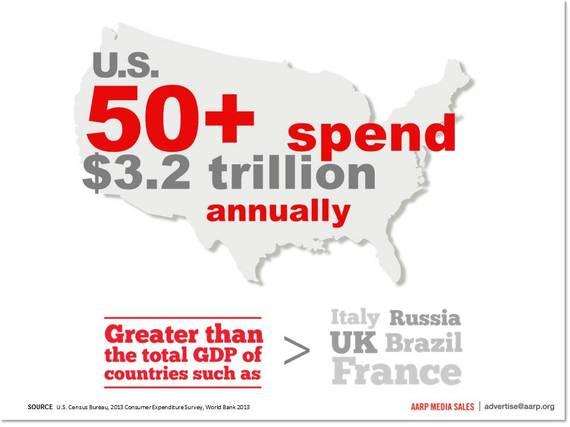According to Pew Research, 2019 is the year in which the largest demographic bulge in history—the baby boomers—slips to the number two spot as millennials become the nation’s largest living adult generation. Some believe millennials have already attained the top spot.
The baby boom generation, born between 1946 and 1964, was the target of marketing and advertising for decades, and with good reason. First, there were 76 million of them. Second, the post-war generation of baby boomers’ parents were living in the most prosperous economy in history, so moms and dads had money to spend on their precious little boomers. Third, 1946—the year the first baby boomer was born—was also the year television was born. As television and boomers grew up together, advertisers would use the new medium to make a direct connection to the huge baby boomer audience.
The years passed and, as the boomer demographic aged, they did what previous generations have always done: they chose products—cars, gas stations, toothpaste, soap, candy, fast food, apparel—they would keep for a lifetime.
Advertisers began viewing the graying baby boom demographic as too set in their ways, opposed to change, and digitally uninformed. Market research showed they weren’t worth any investment of advertising dollars.
As a result, ad dollars started being spent on the second largest demographic in history, the millennials. It’s a great marketing strategy except for one thing: it’s completely wrong.
For one thing, millennials are extremely suspicious of any obvious advertising, so marketers have to resort to sales tactics like influencer marketing, native advertising, and product placement. More importantly is that baby boomers have historically proven themselves to be very open to change and to have very diverse interests.
If you still think of baby boomers sitting at home, waiting for the newspaper to be delivered, talking on a landline, and writing letters on a typewriter, here are a few statistics:
- According to Google, 82% of online boomers have at least one social media account
- The majority of boomers have 4.6 social media accounts
- Facebook and LinkedIn are boomers’ favorite social media channels
- There are more Facebook users age 65+ than in the 13-17 age group
- Tablets are used by 57% of boomers compared with 35% of millennials
- Baby boomers make almost 50% of all retail sales, with 66% making regular online purchases
Did that last one get your attention? Boomers are responsible for almost half of all retail sales. Here are some categories, courtesy of Belo Media Group, followed by the percent of dollars spent by boomers:
- Consumer Packaged Goods (CPG) – 49%
- Apparel – 45%
- Entertainment – 45%
- Transportation – 44%
- Food – 43%
- Healthcare – 43%
- Personal Care – 43%
- Housing – 42%

Other qualities that make boomers a group worth marketing to are:
- They’ve worked for at least forty years
- They’ve saved a fair amount of money
- They aren’t squeamish about spending the money they have
In short, baby boomers are still an advertiser’s dream demographic. So why are marketers bending over backwards to woo uninterested millennials when there are older, wealthier, intellectually curious baby boomers waiting to reward the companies that give them a little attention?
According to a number of web experts, reeling in the baby boomers may only require a few tweaks to current marketing strategies. If you would like baby boomers to take notice of your products or services, here are five things to keep in mind when targeting that still-large demographic:
Don’t Be Too Hip
Boomers seek plain and simple talk. Don’t throw jargon at them and don’t use a bunch of confusing acronyms or abbreviations. When boomers text, they use complete sentences with correct spelling and proper grammar, so they’re not going to try and figure out a bunch of random letters, AFAIUI. Boomers want companies to state their case in clear, unambiguous language. Also, they’re not going to use a #hashtag or click a hashtag.
Prompt Users to Share Content
According to a PEW Research study, baby boomers are 19 percent more likely to share content on Facebook than any other generational group. Plus, unlike millennials, they haven’t been hounded by companies demanding they share their brand story.
Boomers Read Online
They didn’t grow up with seven-second attention spans. As kids, they didn’t have streaming videos or DVDs. If a boomer wanted a good story, they got a book. Consequently, if you write something longer than a few sentences, a boomer will stick with you to the end as long as your site is mobile responsive and easy to read.
Boomers Read Printed Stuff
That’s right—print media: newspapers, magazines, brochures. Where most companies have abandoned direct mail as a marketing tactic, boomers will read what you send to them and it’s a great opportunity to tell your story in a new, protracted way.
You’ll Find Them on Facebook
With 82.3 percent of boomers on at least one social media site, boomers aren’t afraid to hangout online. In fact, boomers are online about 27 hours per week, with 11+ hours of that time on social media. And when they’re on social media, they’re most likely on Facebook. Baby boomers use Facebook more than any other social media channel. As a marketer, it’s good to know where your audience is spending time.
If you want to change the marketing focus of your brand, but don’t have the time or resources to do it all, contact McFadden/Gavender. Our team of experts are ready to take your brand further.



